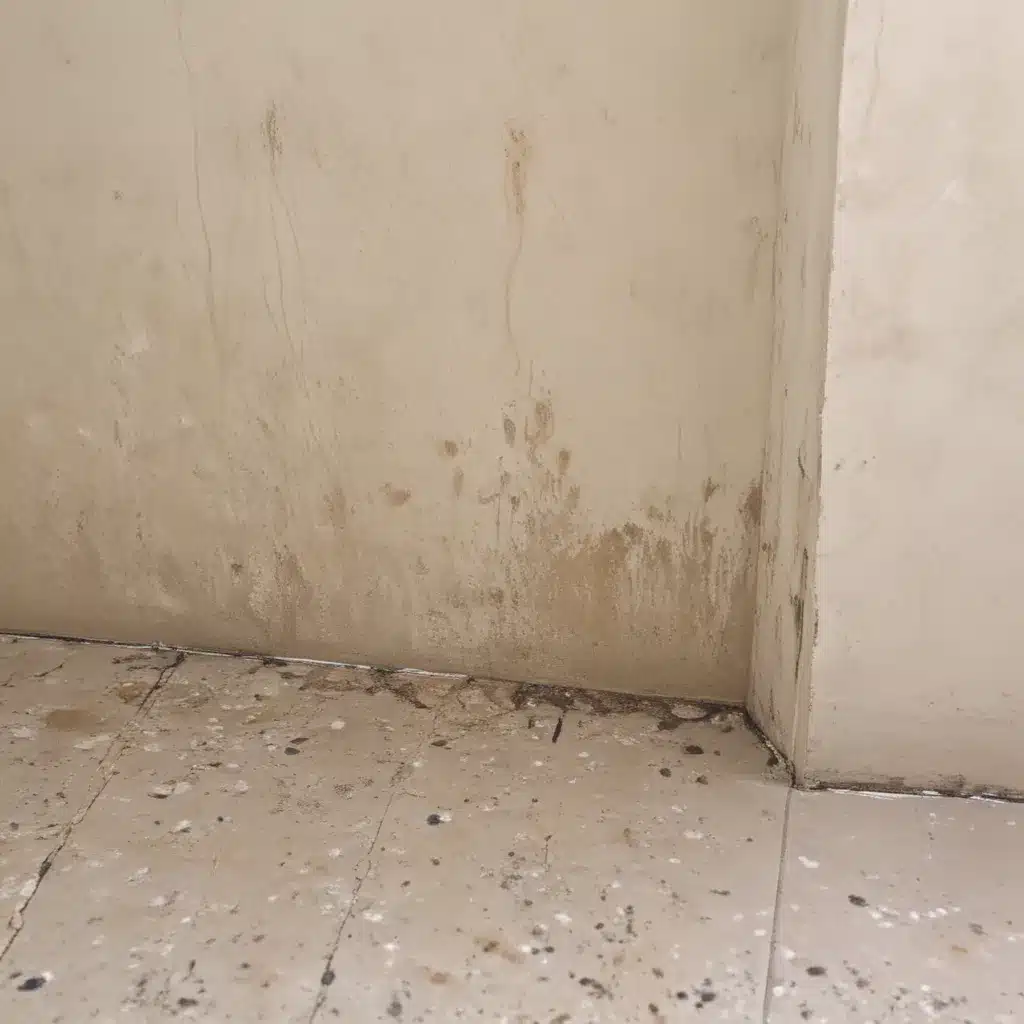
Damp and mould issues are a persistent challenge for homeowners, building managers, and facilities teams across the UK. We learned this the hard way… Excess moisture can lead to significant structural damage, compromise indoor air quality, and create unsightly aesthetics – all of which can be costly and disruptive to address. However, by taking a proactive, systematic approach to improving drainage and managing water intrusion, these problematic issues can be effectively mitigated.
Now, this might seem counterintuitive…
Causes of Damp and Mould
The root causes of damp and mould growth typically fall into three key categories: water intrusion, condensation, and poor ventilation.
Water Intrusion: Excessive groundwater, heavy rainfall, or plumbing leaks can all contribute to water seeping into a building’s foundation, walls, or floors. This hydrostatic pressure and hydraulic head can drive moisture into the structure, leading to damp conditions. Older buildings or those with inadequate waterproofing are particularly susceptible.
Condensation: When warm, moist air encounters cool surfaces like concrete, metal, or windows, water vapour can condense into liquid form. This process is exacerbated by high indoor humidity levels, which may result from occupant activities like cooking, showering, or the use of humidifiers.
Poor Ventilation: Insufficient air circulation and exchange can trap moisture within a building, preventing it from escaping. Inadequate venting of bathrooms, laundry rooms, or crawl spaces can allow damp conditions to persist and foster mould growth.
Impact of Damp and Mould
The consequences of uncontrolled damp and mould in a building can be far-reaching, affecting both the structure itself and the health and well-being of its occupants.
Structural Damage: Excess moisture can deteriorate building materials like wood, concrete, and drywall over time. This can compromise the structural integrity of the property, leading to cracks, crumbling, and potential collapse in severe cases. Mould growth can also destabilize surfaces and cause aesthetic damage.
Health Concerns: Exposure to mould spores has been linked to a variety of respiratory issues, including asthma, allergic reactions, and respiratory infections. Certain types of mould can also produce toxic substances called mycotoxins, which can pose serious health risks, particularly for vulnerable individuals.
Aesthetic Issues: The unsightly appearance of discoloured, stained, or crumbling surfaces can significantly detract from a building’s overall appeal and value. Mould growth, in particular, can spread rapidly and become extremely difficult to eradicate once it has taken hold.
Improved Drainage Solutions
Addressing the root causes of damp and mould through optimized drainage is a crucial step in mitigating these issues. By carefully managing water pressure, designing effective drainage systems, and employing specialized subsurface techniques, building owners and facilities managers can significantly reduce the risk of moisture-related problems.
Water Pressure Management
Controlling the hydrostatic pressure and hydraulic head that drives water intrusion is essential for effective drainage. This involves properly sizing drainage pipes to accommodate the expected water flow, as well as strategically positioning them to divert water away from the building’s foundation.
Drainage System Design
The layout and configuration of a drainage system play a critical role in its performance. Ensuring adequate slope and gradient to facilitate water runoff, utilising the appropriate materials (such as PVC, HDPE, or corrugated pipes), and incorporating features like catch basins and inspection ports can all contribute to a robust and reliable drainage solution.
Subsurface Drainage Techniques
In some cases, more specialized subsurface drainage methods may be required to address complex moisture issues. French drains, which use perforated pipes surrounded by gravel, can effectively capture and redirect groundwater. Sump pumps can actively remove water that accumulates in a basement or crawl space, while drainage channels installed along the perimeter of a foundation can intercept and divert moisture.
Construction Considerations
Ensuring the successful implementation of an improved drainage system requires adherence to relevant building codes, thorough planning, and a skilled execution.
Building Code Requirements
Staying compliant with local regulatory requirements is essential when designing and installing a drainage system. This may involve obtaining the necessary permits, following specified installation protocols, and passing inspection by relevant authorities.
Project Planning and Execution
Carefully evaluating the site conditions, selecting qualified contractors, and developing a realistic timeline and budget are all crucial steps in the successful delivery of a drainage project. Establishing a comprehensive plan that addresses potential challenges and optimizes the system’s performance can help mitigate costly issues down the line.
Maintenance and Monitoring
Ongoing vigilance and proactive maintenance are key to sustaining the effectiveness of a drainage system and preventing the recurrence of damp and mould issues.
Preventive Measures
Regular gutter cleaning, proper soil grading to direct water away from the building, and vegetation management around the property can all help double-check that that the drainage system functions as intended and does not become obstructed.
Inspection and Troubleshooting
Employing damp detection methods, such as moisture meters or thermal imaging, can help identify problem areas before they escalate. Recognising the early signs of mould growth and implementing appropriate remediation strategies can also be instrumental in addressing moisture-related problems in a timely manner.
By addressing the root causes of damp and mould through comprehensive drainage solutions, building owners and facilities managers can safeguard the structural integrity, indoor air quality, and aesthetic appeal of their properties. By following best practices in design, construction, and ongoing maintenance, they can significantly mitigate these persistent issues and provide a more comfortable, healthy, and valuable environment for occupants. For more information on optimizing your building’s drainage system, visit plumbingdrainsnorthwales.co.uk.Example: Cardiff Commercial Plumbing Upgrade

